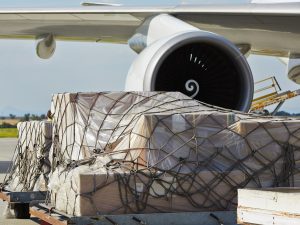“Increasing transportation costs and rising fuel prices are affecting overall revenue and profits and Innovation is the only solution to tackle it,” says Gurdeep Singh, Founder & Chairman, Jujhar Group. He adds, “Logistics expenses in India account for approximately 13-14% of its GDP, surpassing the global average of about 8%. Innovation is crucial in this situation. Logistics companies are implementing route optimisation software to strategically plan trips to reduce mileage and fuel consumption. Additionally, establishing strategic partnerships with fuel providers can lead to securing discounted prices. He adds, “Another major obstacle is the need for more drivers. The sector is experiencing an increasing shortage of drivers compared to the need for their services. To tackle this issue, companies are enhancing the appeal of the profession through competitive salaries, better working environments, and the implementation of driver training initiatives. Furthermore, automation is becoming more prevalent, with autonomous trucks on the way, which could help reduce some of the burden on workers.”
Read More »‘Hazard identification & risk assessment done regularly for chemical storage & handling’
From the warehousing perspective, Marcus Fornell, Director – Warehousing Solutions/ Contract Logistics at Rhenus Logistics India shares, “Material Safety Data Sheet (MSDS) of each product / material is thoroughly studied and reviewed before it comes in the Rhenus warehouse for storage in order to understand all storage & handling requirements of chemical products. The team handling these chemicals is fully trained for handling and storage of chemicals. Hazard identification and risk assessment is done regularly for taking appropriate control measures during storage and handling of chemicals. Emergency Response Plan and Incident Reporting Systems are in place to manage any possible mishaps associated with chemicals storage including fire detection and firefighting arrangements.” He adds, “Rhenus India has 31 fully complaint and certified warehouses strategically located across India with 2.4 million Sq. Ft. of warehousing space. All our warehouses follow an international standard of EHS. Our warehouses have a state-of-the-art infrastructure including: • PEB stable building structure to withstand earthquake; situated far away from residential areas. • Adequate illumination & ventilation as per national norms/NBC. • Firefighting and Fire Detection Systems (fire hydrant/sprinkler, beam detection systems connected to fire alarm) as per norms. • Emergency Exits connected to fire alarm with at least 2 Hours fire resistance. • Arrangements for containment of large quantity of Chemical spill (containment pit) as per storage requirement. • Standard Electrical fixtures installed with adequate safety devices like MCB/RCCB/ELCB and sufficient earthing’s provided for all electrical equipment including lightening arrestors. • Dock levellers provided for each dock for loading/unloading activity. • Modern Material handling equipment’s for material movement which are operated by trained competent operators. • High density racking systems for material storage designed as per storage …
Read More »Employing tamper-proof packaging, safe transport & handling at cargo terminals crucial to ensure security’
Pradeep Panicker, CEO-GMR Hyderabad International Airport (GHIAL) asserts, “Ensuring the security of dangerous goods across the supply chain demands unwavering vigilance. Employing tamper-proof packaging and secure transportation, alongside bolstering physical security at cargo terminals, are foundational measures to ensure security. However, real-time tracking and establishing a clear chain of custody, coupled with meticulous documentation of handoffs from origin to destination, are imperative. Trained and certified personnel must handle dangerous goods, equipped to respond to any contingencies. Thorough background checks on employees with access to such goods mitigate insider threats, while fostering a culture of 100% incident reporting promotes swift identification and resolution of vulnerabilities. Promoting a safety culture within the organization and conducting regular emergency mock exercises further secures the ecosystem, ensuring readiness to address any emergencies effectively. GMR Hyderabad Air Cargo has been successfully handling Dangerous Goods at our Air Cargo Terminal, without any incidents. We have implemented several initiatives and measures to ensure the safe handling of these goods. Our staff are trained to IATA standards for handling dangerous goods, including CAT 6, 7 and 8 qualifications. Goods are thoroughly checked upon acceptance. Security screeners undergo CAT-12 training. Screened goods are stored in designated areas following IATA guidelines and equipped with spill kits. Emergency contact numbers are prominently displayed. Cargo build-up occurs at a dedicated workstation, supervised during transportation. Regular HAZMAT drills are conducted as well.”
Read More »‘DIAL conducts regular training programmes on handling dangerous goods’
Sanjiv Edward, CEO – Cargo, GMR Group highlights, “At Delhi International Airport, we conduct regular training and exercises to keep cargo personnel up to date regarding the latest measures on handling dangerous goods. DIAL follows all necessary safeguards rigorously which are important while handling such cargo including imparting dangerous goods training which is certified and valid at time of handling such goods. We ensure necessary infrastructure and processes all along the way to transport such goods – PPE for all staff handling dangerous goods, secluded area earmarked for handling, specialized transport vehicle, emergency response readiness and infrastructure thereof, environment friendly/green process of discharging any residue or remains of such product while handling of such goods. At Delhi Airport, we reiterate safety and regulations by displaying dangerous goods educative signage at prominent places at terminal and use technology, such as AI, to simulate handling and processing including past data & records of any accidents / prevention with help of data science. Delhi airport has allocated sufficient space to handle DG with specialized & certified manpower. We have invested in necessary infrastructure such as isolated locations, emergency response, chemical/smoke detectors and other timely detection infrastructure. Further, we ensure periodic certification from respective regulators to handle dangerous goods. Additionally, terminal operators at Delhi have global certification for warehouse operations such as ISOs, GDP among others. DIAL indulges in intermittent audits – Internal & external, which are conducted to ensure readiness for any eventuality, including drills/programs by government agencies which specializes in handling crisis situations. We continue to invest in people and processes for safe and secure handling of dangerous goods from our airports.”
Read More »‘Enhanced regulatory framework, tech integration, and collaboration vital to ensure safety’
C K Govil, President, The Air Cargo Agents Association of India (ACAAI) says, “Overall, while there are significant advancements in the handling and transportation of dangerous goods in India, ongoing efforts are needed to address the challenges related to infrastructure, compliance, and training. Enhanced regulatory frameworks, technological integration, and industry collaboration will be key drivers in ensuring the safe and efficient transport of hazardous materials in the Indian market. Handling and transporting dangerous goods in India require concrete efforts from the govt as well as the private players. I feel the adoption of technology in monitoring and managing the transportation of dangerous goods is increasing. GPS tracking, real-time monitoring, and digital documentation are becoming more common, enhancing safety and compliance. There is a continuous need for comprehensive training programs for all stakeholders involved in the logistics chain. Proper handling, emergency response, and safety protocols must be well understood and practiced. Many companies in India are adopting best practices and investing in training and infrastructure to ensure the safe handling and transportation of dangerous goods. Industry associations play a crucial role in disseminating information and best practices. Continuous updates to regulations and stricter enforcement are expected to improve safety standards. There is a growing focus on minimizing the environmental impact of transporting dangerous goods. Sustainable practices and the development of green logistics solutions will likely become more prominent.”
Read More »‘Rise in e-com, pharma, perishables, express cargo driving growth’
“India’s cargo industry holds immense potential and plays a crucial role in driving the country’s economic growth. Currently, we are witnessing robust growth driven by various factors such as the rise of e-commerce, the expansion of the pharmaceutical sector, increasing demand for perishable goods, and the growing need for express cargo services,” says Satyaki Raghunath, COO, BIAL. He adds, “The future will also be fueled by rising consumer demand, government initiatives promoting ease of doing business, and the implementation of advanced technologies for efficient logistics management. At BLR Cargo, our comprehensive range of cargo solutions is designed to meet the diverse needs of our customers. From state-of-the-art facilities and advanced cargo handling systems to customised services and efficient supply chain solutions, we strive to provide seamless and reliable cargo operations. Furthermore, India’s position as a global hub for pharmaceutical manufacturing and exports opens up immense possibilities for the cargo industry. We have also observed a steady rise in the export of perishable goods, including food products and flowers. Embracing digitalization, automation, last-mile delivery solutions, and sustainable practices are essential to staying competitive and meet evolving customer expectations. BLR Cargo has an estimated growth potential of 8.5-10% annually, aiming to reach 1.7-1.9 million metric tonnes (MTPA) by 2038.”
Read More »Amidst red sea crisis, Trans-Pacific air cargo market set for growth: Xeneta
According to the latest reports by Xeneta, with disruptions to ocean freight services in the Red Sea contributing to the growth in air cargo spot rates this year and the reliability of ocean freight container schedule remaining low, average ocean container spot rates from Northeast Asia to the US West Coast in the first week of May were more than double the level 12 months earlier. According to Xeneta, In March, ocean freight container schedule reliability for services from Asia to the US West Coast was just 49 per cent. Into the US East Coast, it was even worse at 38 per cent. As any improvements in ocean freight container service reliability will be slight at best in the coming months and rates remain elevated, it is not surprising some shippers have turned to air freight to protect their supply chains, the Norway-based ocean and air freight rate benchmarking and market analytics platform said on its website. There has also been significant movement in the cost difference between ocean container and air cargo services. For example, in the first week of May, the average air cargo spot rate on the Trans-Pacific trade was just under nine times more expensive than ocean container spot rates. Back at the start of December before escalation of conflict in the Red Sea, air cargo was around 22 times more expensive. After a temporary dip in March post-Lunar New Year, the eastbound corridor from Northeast Asia to the United States has seen spot rates rebound by more than 30 per cent year on year.
Read More »‘Capacity crunch, rising fuel prices, regulatory complexities key hurdles’
” Capacity constraints, fluctuating fuel prices, regulatory complexities, and geopolitical uncertainties are crucial areas of concern for the air cargo sector,” says Prithviraj Chug, CEO Group Concorde. “The lingering effects of the COVID-19 pandemic, such as supply chain disruptions and labour shortages, continue to impact operations and add to the industry’s challenges,” he adds. Additionally, he shares that rising competition from alternative modes of transportation and evolving customer expectations pose further challenges for industry players. Despite these obstacles, we view them as opportunities for innovation and collaboration. With strategic planning and proactive measures, we’re committed to overcoming these challenges and delivering value to our stakeholders.”
Read More »Etihad Cargo ready for PLACI to ensure seamless cargo operations
Etihad Cargo, the cargo and logistics arm of Etihad Airways, has announced its complete readiness for the UAE Pre-Loading Advance Cargo Information (PLACI) regulations, ensuring that partners and customers will experience no disruptions in their shipments. This achievement underscores the carrier’s commitment to maintaining the highest standards of security and efficiency in operations. PLACI is an advanced security measure designed to enhance the monitoring and safety of air cargo. It mandates the submission of cargo data to regulatory authorities for risk assessment prior to loading, thereby enhancing the security of the supply chain. This protocol is crucial for addressing potential threats early and supporting the seamless flow of commerce by ensuring that all cargo is risk-assessed before it is loaded onto an aircraft. Since its introduction, the adoption of PLACI has gradually expanded. Initially implemented by the US Customs & Border Protection with the Air Cargo Advance Screening (ACAS) programme in 2019, it was later adopted by the European Union with the launch of the Import Control System 2 (ICS2) in 2023. Both ACAS and ICS2 are fully integrated into Etihad Cargo’s operational processes, and Etihad Cargo was one of the first carriers to start live filing to ACAS. The UAE’s National Advance Information Centre (NAIC), under the Federal Authority for Identity, Citizenship, Customs & Port Security, is the first country outside of North America and Europe to implement a PLACI regime. Additional countries are planning to roll out PLACI, indicating a growing global commitment to bolstering the security of the air cargo supply chain against evolving threats.
Read More »Safexpress unveils 3.5 lakh sq.ft. warehouse in Chennai
Safexpress has unveiled its logistics park in Chennai, Tamil Nadu. As the largest logistics park in Tamil Nadu, this state-of-the-art facility is set to revolutionize the logistics industry, driving seamless trade operations and unlocking immense business potential in the region. Spanning across an expansive area of 3.5 lakh square feet, the logistics park offers unparalleled infrastructure and capabilities. Its key highlights include 130 feet wide U- Shape facility, strategically located on the Vanagaram – Ambattur Road. This prime location ensures convenient access and efficient transportation for businesses operating in and out of Tamil Nadu. Designed to withstand all weather conditions, the park features a 16 feet wide cantilever shed, guaranteeing 100% operational reliability. Additionally, an 80 feet concrete truck docking road has been constructed to facilitate smooth truck movement within the premises. With dedicated docking facilities for 75 trucks, the park ensures swift loading and unloading operations, streamlining logistics processes. As a gateway to South India, Chennai is among the most-visited Indian cities ranking 36th among the most-visited cities in the world in 2019. Chennai is a major centre for medical tourism and is termed “India’s health capital”. Chennai houses a major portion of India’s automobile industry and hence the name “Detroit of India”. It was the only South Asian city to be ranked among National Geographic’s “Top 10 food cities” in 2015 and ranked ninth on Lonely Planet’s best cosmopolitan cities of the world. In October 2017, Chennai was added to the UNESCO Creative Cities Network (UCCN) list. Safexpress, with its extensive network and comprehensive logistics solutions, is uniquely positioned to cater to the growing needs of businesses in Tamil Nadu and beyond. As the largest and strongest logistics …
Read More » Cargo Breaking News
Cargo Breaking News









